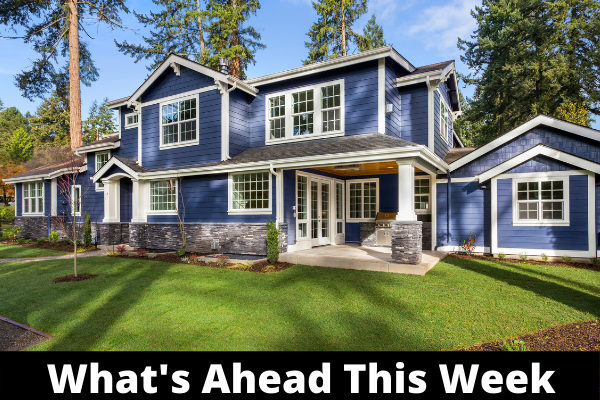What’s Ahead For Mortgage Rates This Week – February 28, 2022
 Last week’s economic reporting included readings on home prices from S&P Case-Shiller and the Federal Housing Finance Agency; data on pending home sales and sales of new homes were also released. The University of Michigan released its final February reading on consumer sentiment and weekly reports on average mortgage rates and jobless claims were also published.
Last week’s economic reporting included readings on home prices from S&P Case-Shiller and the Federal Housing Finance Agency; data on pending home sales and sales of new homes were also released. The University of Michigan released its final February reading on consumer sentiment and weekly reports on average mortgage rates and jobless claims were also published.
S&P Case-Shiller Home Price Indices: Home Price Growth Expected to Slow in 2022
December readings from S&P Case Shiller suggested a slowing pace of home price growth in 2022 but analysts said that home prices are not expected to decrease. Case-Shiller’s National Home Price Index showed an 18.80 percent increase in home prices year-over-year. S&P Case-Shiller’s 20-City Home Price Index reported that Phoenix, Arizona held on to its first-place standing for home price growth with home prices increasing by 32.50 percent year-over-year. Tampa, Florida home prices rose by 29.40 percent, and the Miami, Florida metro area reported home price growth of 27.30 percent. Analysts expect that home prices will continue to rise, but not at the extreme pace seen in 2021.
The Federal Housing Finance Agency, which oversees properties owned and financed by Fannie Mae and Freddie Mac, reported year-over-year home price growth of 17.60 percent as of December. Analysts said that January’s bad weather, rising mortgage rates, and continued impacts of Covid-19 and its variants decreased sales of new homes by 9.30 percent in January. The National Association of Realtors® reported supplies of available homes were in the normal range with a 6.1-month supply of homes available. A six-month supply of available homes is considered an average inventory.
Mortgage Rates, Jobless Claims
Freddie Mac reported lower average rates for fixed-rate mortgages as the average rate for 30-year fixed-rate mortgages fell by three basis points to 3.89 percent; rates for 15-year fixed-rate mortgages dropped one basis point to an average of 3.14 percent. Rates for 5/1 adjustable-rate mortgages were unchanged at 2.98 percent. Discount points averaged 0.80 percent for 30-year fixed-rate mortgages and 0.70 percent for 15-year fixed-rate mortgages. Discount points for 5/1 adjustable-rate mortgages averaged 0.30 percent.
Initial jobless claims were lower last week with 232,000 new claims filed as compared to the prior week’s reading of 249,000 initial claims filed. Analysts expected 235,000 new jobless claims to be filed last week. 1.48 million continuing jobless claims were filed last week as compared to the prior week’s reading of 1.59 million continuing jobless claims filed.
What’s Ahead
This week’s scheduled economic reading includes data on construction spending, public and private sector jobs, and the national unemployment rate. Weekly reports on mortgage rates and jobless claims will also be released.